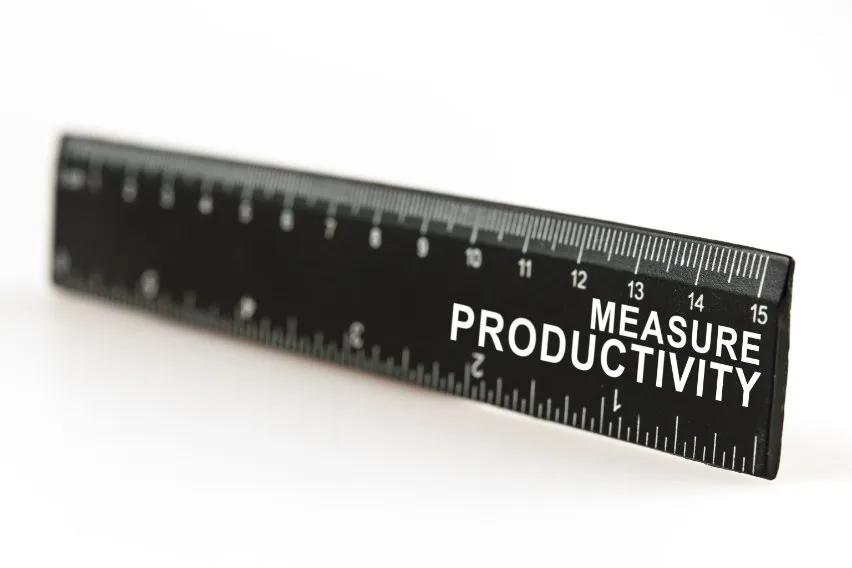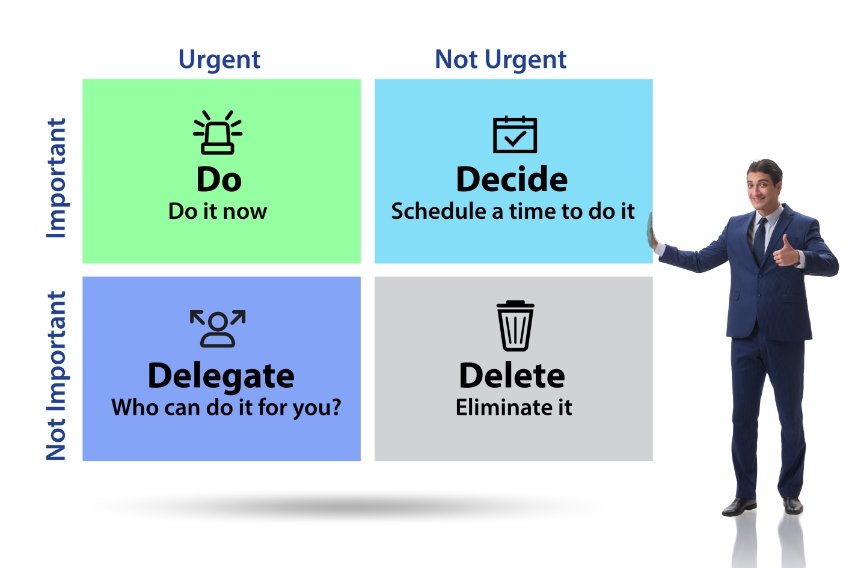How to Measure Productivity: Best Methods & Tips

Low-performing employees can keep you from achieving your business goals. You need to ensure they don’t fall behind other team members. The first step is to measure their productivity. This article will tell you how to do so.
We’ll discuss the importance of gauging productivity. We’ll also share the best methods for evaluating this metric.
Table of Contents
Why Productivity Must Be Measured
How Is Productivity Calculated?
Methods to Measure Productivity
Tips for Measuring Productivity
What Is Productivity?
Productivity is a measurement that tells you how efficiently your staff converts input into output. It indicates how well your employees use resources to sell products and services.
There are four types of productivity:
Personal Productivity
This term generally describes how much work individual employees accomplish per day. It determines how effectively they manage their time.
Workforce Productivity
Workforce productivity includes the total productivity of all personnel in your workforce.
Sector Productivity
This metric calculates the productivity of all sectors, including your company’s production process.
Department or Team Productivity
Department or team productivity is the total output of all individuals who want to achieve a single goal. For instance, you can use this metric to calculate the efficiency of your HR department.

Why Productivity Must Be Measured
Calculating productivity is incredibly helpful. Here’s how you can benefit from this process:
Helps Polish Your Operations
Measuring productivity can dramatically improve your business efficiency. Think about it—it assesses your workers’ yield output and allocated resources. This gives you insight into your available resources, including human assets and technology.
Once you get the results of your analysis, you learn how productive your team is. You determine if you need to tweak your strategies and polish your operations to maximise profits.
Proper Time Management and Allocation
Analysing the time your staff needs to perform tasks is key to measuring an organisation’s productivity. The same goes for labour allocation.
Calculating productivity tells you how your company allocates labour. It also determines the efficiency of project management. This gives you a clear picture of how employees are performing.
This knowledge allows you to optimise your resources and allocate them more efficiently. A productive environment guarantees faster results and lets your team complete tasks faster.
Identifying Weaknesses
An honest assessment of your productivity helps identify your team’s weaknesses. This assessment locates weak links, enabling you to address them with proper strategies.
For instance, finding ways to measure and boost productivity increases efficiency. Your team learns how to cope with larger projects, not just smaller tasks.
Helping Your Employees Grow
Productivity checks can make your business more transparent. If your team makes mistakes, you can offer feedback to help them grow.
Constructive feedback is essential. People want to know how employers view their performance. They want to know if they’re doing well.
Therefore, they focus more on workplace productivity when they know you’re tracking progress. This helps them focus on clear expectations, which leads to increased productivity.
On top of that, your workforce receives great tips on rectifying their weaknesses. They learn how to adjust and align their efforts with your company’s vision. Over time, they move forward faster and meet company goals consistently.
Culture of Appreciation
Tracking an employee’s productivity shows you who is struggling and who is excelling. You can compensate these high-performing workers and ensure they get their recognition.
Team members who have fallen behind can also use your and customer feedback to see how they can elevate their skills.
This boosts employee morale because your best workers feel appreciated. They also know low productivity entails consequences. So, they’re more likely to give their best.
Higher Net Sales
Understanding productivity helps you optimise your products and services. You can meet the needs of your target audience more effectively.
You can also improve your existing offerings and introduce new ones. Each employee is trying harder due to productivity measurements, which increases company profits.
How Is Productivity Calculated?
You can use many ways to calculate productivity. But it’s generally measured with the labour productivity equation:

Let’s look at an example. Say your business generated about $80,000 worth of services or products. This is your output. Let’s also assume your team worked 1,500 hours. That’s your input.
To calculate productivity, you need to divide the $80,000 by 1,500. This equals 53. So, your team earned you $53 for every hour of labour.
You can also analyse productivity in the workplace by considering individual contributions. This requires you to use the number of workers (and not employee labour hours) as your input.
Here’s how the calculation works:
- Value of services or goods in seven days – $80,000
- Hours worked – 30
- Productivity – $80,000/30 = $2,667
Each worker generates $2,667 for your business per week.
Methods to Measure Productivity
Here are a few methods for how to measure productivity:
Quantitative Method
The quantitative method is time-saving and simple. It measures productivity by determining how many products or services your team members sell during a certain period.
Take the results with a grain of salt, though, since it only considers internal factors. It ignores external factors of productivity trends, which can impact the analysis. This includes job training, waiting for resources, or delays due to broken equipment.
Use a Productivity Calculator
Online productivity calculators allow you to determine individual productivity. This method determines the efficiency of your team by seeing how many hours they need to complete tasks.
Start by entering your information. The platform should automatically show an employee’s productivity.
For instance, suppose your business has 56 team members who work around 160 hours per month. They help your company make a profit of $200,000. Based on this data, a calculator will tell you your productivity per worker is $1,250 per hour.
Tracking Tasks
The most common metric for assessing productivity is the number of hours spent at your office.
But many business owners believe there’s an easier way to measure employee performance. You just calculate the tasks employees perform during the day.
The principle is simple. The more projects they complete, the more productive your employees are.
You’ll waste a lot of time if you want to measure employee productivity manually. Switch to software. Computer spreadsheets may be your best bet. They allow you to enter information within seconds. And they determine whether some of your staff is falling behind.
Assess Profits
Profit counts most in any business. So it’s no surprise that many companies measure employee productivity according to profits. This method works by calculating the amount of money your business earns for every dollar invested in employees’ salaries.
Most companies rely on this approach because it’s straightforward. If workers spend more time in the office, but your organisation isn’t profiting, they’re not being very productive.
Measuring employee productivity this way is also flexible. It’s applicable to any company size because it uses the most basic calculation.
Daily Conversations
If you want your team to maintain their performance, you need to check up on them daily. To do so, organise catch-ups. Here, they’ll provide an update on their progress with particular projects.
This is a great way to measure employee productivity. It ensures the staff feels valued for their contribution.
That said, the method is far from perfect. If implemented incorrectly, it can seem as though you’re micromanaging your employees. They might not realise you’re trying to measure employee productivity.
Tips for Measuring Productivity
You can do a lot to improve productivity measurements, including:
Establish Baselines
Before you start measuring employee productivity, you need to set standards. Determine what each position needs to achieve and how much profit they’re expected to make.
In other words, set the targets your employees should hit for particular tasks. This tells them how well they need to perform. In turn, your company’s productivity standards are more transparent.
Set Clear Goals and Conduct Client Surveys
Examine how an employee’s productivity helps you reach your business goals. Tell each worker what they should strive for. This way, they know which skills they need to develop.
A good way to prepare your staff for productivity evaluations is to conduct surveys. Establish your team’s strengths and weaknesses. Also, see how their career goals align with your company’s vision. You can use this to explain why some workers perform better than others.
Consider Culture and Your Employees’ Needs
Toxic corporate environments lower productivity and increase staff turnover. They can also increase retention and hiring costs.
A positive business setting helps you get the best out of your staff. It raises team morale, which leads to higher productivity.
So, you need to determine how well your teams collaborate. Other factors of company culture you should consider include:
- Employee satisfaction
- Flexible schedules (whether employees can modify their own schedules)
- Mixture of larger and smaller tasks
- A sense of achievement with each successful project management
- Opportunities for career growth
Knowing how your team members feel about your business is key. It gives you valuable information that informs your decision-making. You also get ideas for enhancing productivity.
Again, use surveys to check their attitudes. If your workers don’t recommend your enterprise to other people, postpone your analysis. Measure employee productivity after addressing any issues.

Key Takeaways
You need proper ways to measure productivity in your business. This can mean using tracking tasks or a productivity calculator. Assess profits, and make sure you have daily conversations with your staff. You also can and should use the quantitative method.
The more you can do this, the better the results will be in your company. You’ll see a boost in morale and more spirited efforts in employees. You’ll foster a culture of appreciation. Overall, this will lead to higher net sales.
FAQs on Productivity Measures
What is good productivity?
Good productivity varies depending on the calculation method. But in general, the optimal percentage is between 70% and 75%. It means your workers are busy at least 70% of the time. And they are taking minimal breaks.
How do you ensure employee productivity at work?
There are many ways to ensure increased productivity in the workplace:
- Promoting transparency and effective communication
- Providing your team with cutting-edge technology
- Encouraging learning opportunities
- Offering constructive feedback
Why should productivity be improved?
You should improve your staff’s workplace productivity to achieve better business results. It also fosters a wholesome company culture.
RELATED ARTICLES

 Team Collaboration: Definition, Importance & Benefits
Team Collaboration: Definition, Importance & Benefits Time Management Matrix: Definition, Importance & Benefits
Time Management Matrix: Definition, Importance & Benefits Materiality Concept in Accounting: Definition, Importance & Example
Materiality Concept in Accounting: Definition, Importance & Example Top-Down Estimating: Definition, Methods, Pros & Cons
Top-Down Estimating: Definition, Methods, Pros & Cons